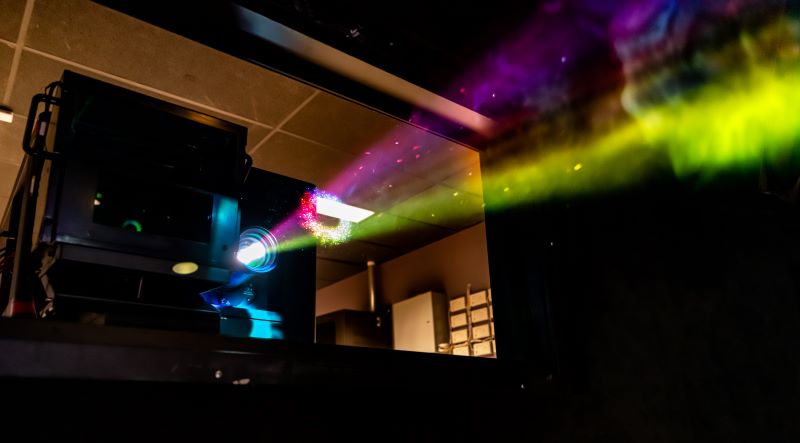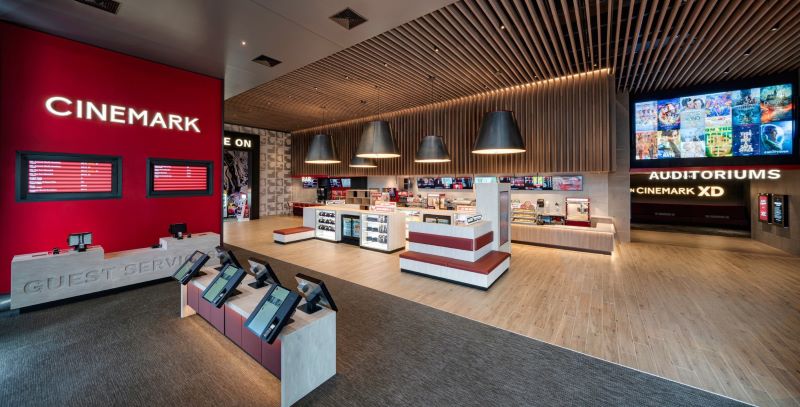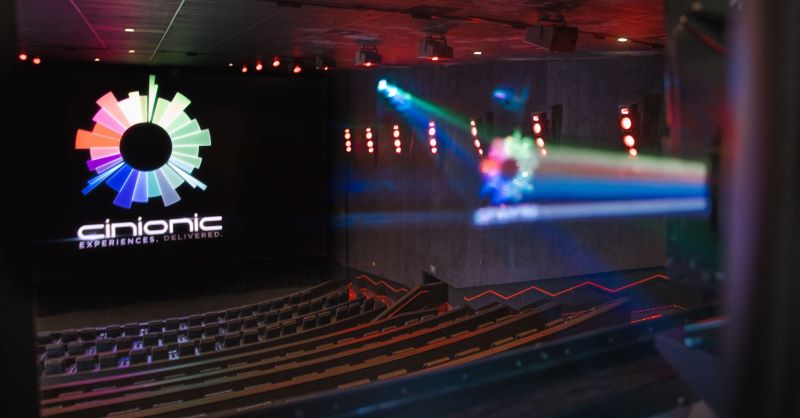
Despite the lingering ravages of the pandemic, movie theater operators are making sizeable investments to upgrade and reconfigure their physical plants.
It’s something of a surprise because of post-Covid economic uncertainty and most cinema companies are already weighed down with heavy debt. But the capital-expenditure (CapEx) investment cycle is happening in exhibition.
Most conspicuously, the giant AMC Theatres chain plans to install what it calls “Laser at AMC” projection technology from Cinionic that the circuit says eventually will be nearly all AMC locations; its initial laser projectors are already operating at three theaters in the Burbank/Los Angeles area.
“Whenever you see Laser Projection by Cinionic, you can expect brighter, sharper, and more vivid colors every time you go to the movies,” Wim Buyens, CEO of Cinionic, says in a press release. Cinionic was founded in 2018 as a joint venture with Barco, a Belgium company that is the leading equipment supplier to cinemas globally.
AMC operates 950 theaters worldwide with 10,500 screens. Though debt heavy, the circuit says that it is committed to a new cycle of facilities upgrades.
The laser hardware “represents putting in $0.25 billion of new projectors into our theaters, and the benefits are numerous,” AMC CEO Adam Arons said in an Aug. 4 earnings conference call. The projectors “increase the light levels on screen by 50% to 100%, makes the pictures brighter, sharper, clearer, crisper.” Lasers are also more energy efficient than the projectors they replace, AMC says.
Arons continued: “Speaking of investments, our Board of Directors also has authorized us to establish a fund of up to $100 million for additional, transformative investments. We are absolutely committed to transforming AMC into a bigger, bolder, stronger, and more successful company that even the one that existed prior to the pandemic.”
The third largest circuit in the United States, Cinemark introduced its “reimagined theatre design” at its Missouri City and XD location, which is a 14-screen theater in the Houston TX metro area. That Missouri City/XD theater includes Luxury Lounger seats, D-BOX seats with motion control synced to on-screen action, and two big-screen XD format auditoriums (XD auditoriums have recliner seats, improved speakers and larger screens). The broader facility layout also includes an arcade area and expanded food/beverage service.

The interior was carefully constructed based on extensive psychological research, a Cinemark press release says. “Everything from the ticket kiosks to the concession stand layout, to the colors of the décor has been carefully chosen in order to create a cinematic moment that extends beyond just the story on the screen,” Wanda Gierhart Fearing, Cinemark Chief Marketing and Content Officer, says in a press release.
Elsewhere, a theater in Thailand is the first to license equipment from Toronto-based ARHT Media creating in-lobby hologram images for promotional purposes using its Capsule display technology. “Capsule is billed as a ‘plug-and-play, fully interactive 4K display system’ that merges the physical world and metaverse,” says a Variety story by Manori Ravindran. “The Capsule technology provides interactive functionality including motion sensors, touch screen and two-way cameras. This offers immersive ways to ‘gamify’ the lobby experience, which gives advertisers and studios new ways to engage with audiences.”
Expect in-lobby holograms and other technological marvels to spread in cinemas via their CapEx splurge. It’s almost a necessity to stay ahead of comforts and technology “wow” from in-home theater equipment.
Some of the upgrades are more reconfigurations, but again involve modernizing facilities. AMC announced a partnership earlier this month with video conferencer Zoom. So-called Zoom Rooms at AMC are expected to be planted at theaters in up to 17 cities. “As hybrid work has become more commonplace throughout the United States,” says an AMC press release, “Zoom Rooms at AMC will enable companies and other entities with decentralized workforces and customer bases to bring people from different markets together at the same time for cohesive virtual and in-person events and meeting experiences.”

Developments for the cinema industry are certainly not all rosy. The parent of U.S.-giant Regal Cinemas filed for bankruptcy in September, but that’s from debt assumed in acquisitions and losing a $1.24 billion court verdict a year ago from an abandoned merger with Canada’s Cineplex circuit. Also, a St. Louis-based seat manufacturer supplying cinemas filed for bankruptcy during the pandemic too.
Many pundits have already issued an obituary for cinema. But if that’s the case, then the live-music concert business and in-stadium attendance for sports are toast, too. None of that is happening. Consumers crave group events whether going to school, cinema, shopping malls, concerts, exercise class, worship service, political rallies … the list goes on.
There’s a lot of vitality visible that flies in the face of that assertion. Cinema loyalty programs roll up huge registrations — Cinemark’s posted 1 million members recently. Also, a new MoviePass discount program launched, under new ownership after a predecessor crashed in 2019.
The current upgrading cycle for facilities should keep cinema competitive in the years ahead.
Related content:
This technology is needed. People were squinting watching movies on bigger screens.